Abstract
An established cell line (Vero) defective in interferon production was used to evaluate the role of interferon in chronic rubella virus infections of cell cultures. Inoculation of Vero cells with a low multiplicity of virus resulted in the development of carrier cultures which had the characteristics of a regulated infection. Although added interferon did not alter rubella virus production in carrier cultures of cells capable of producing interferon, such added interferon caused a dramatic reduction of virus production in the carrier cultures of Vero cells. There was a reduction of the fraction of cells producing virus in Vero carrier cultures, but not in carrier cultures of other cells upon incubation in the continual presence of rubella virus antibodies. In addition, the fraction of infected cells fluctuated in carrier cultures in Vero cells. The data indicate that interferon is not necessary for maintaining a chronic rubella virus infection in vitro and suggest an instability of the virus genome in Vero cells.
Full text
PDF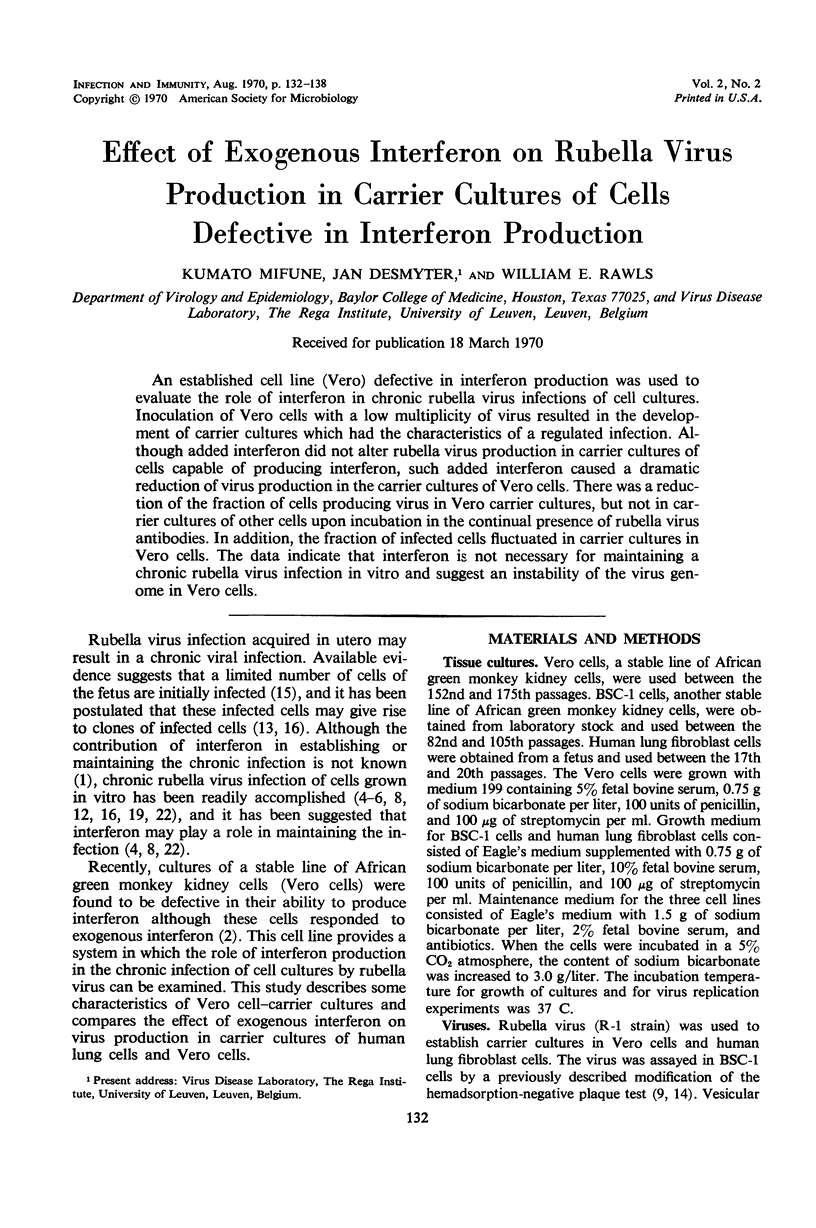
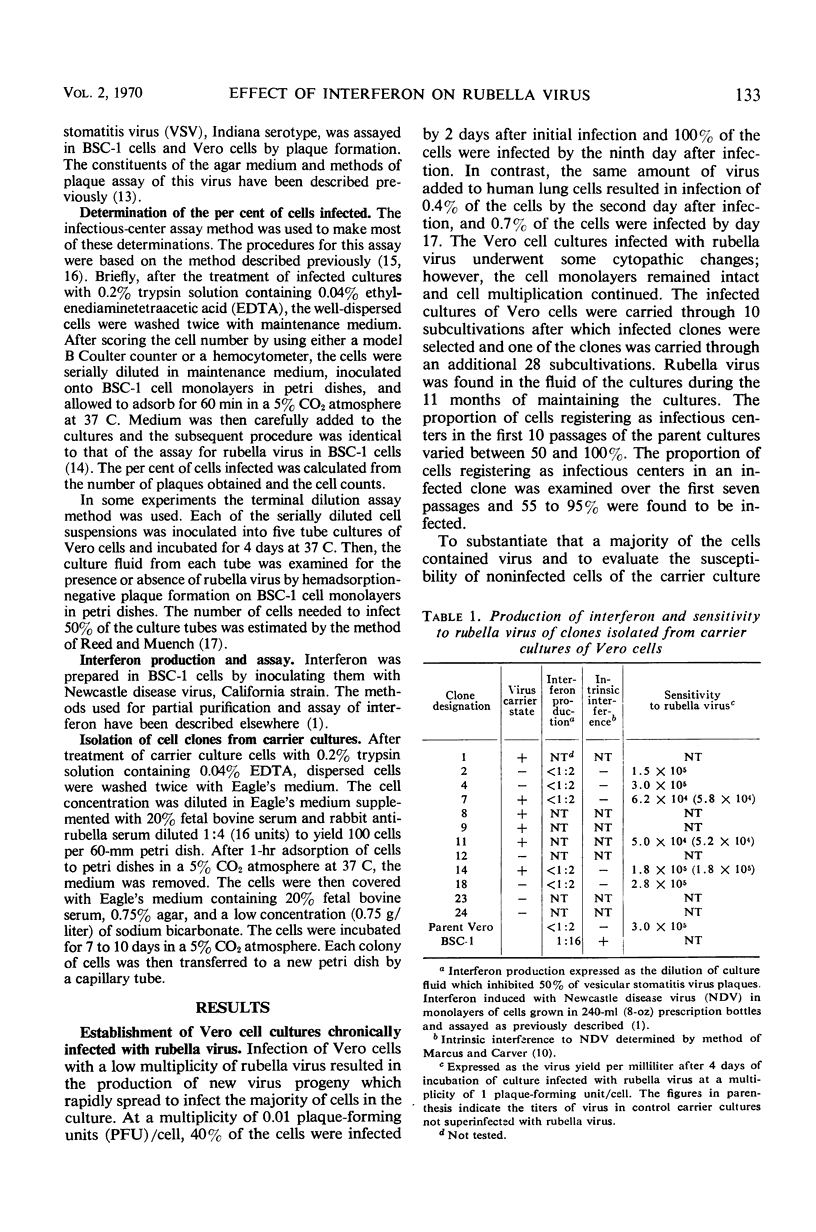
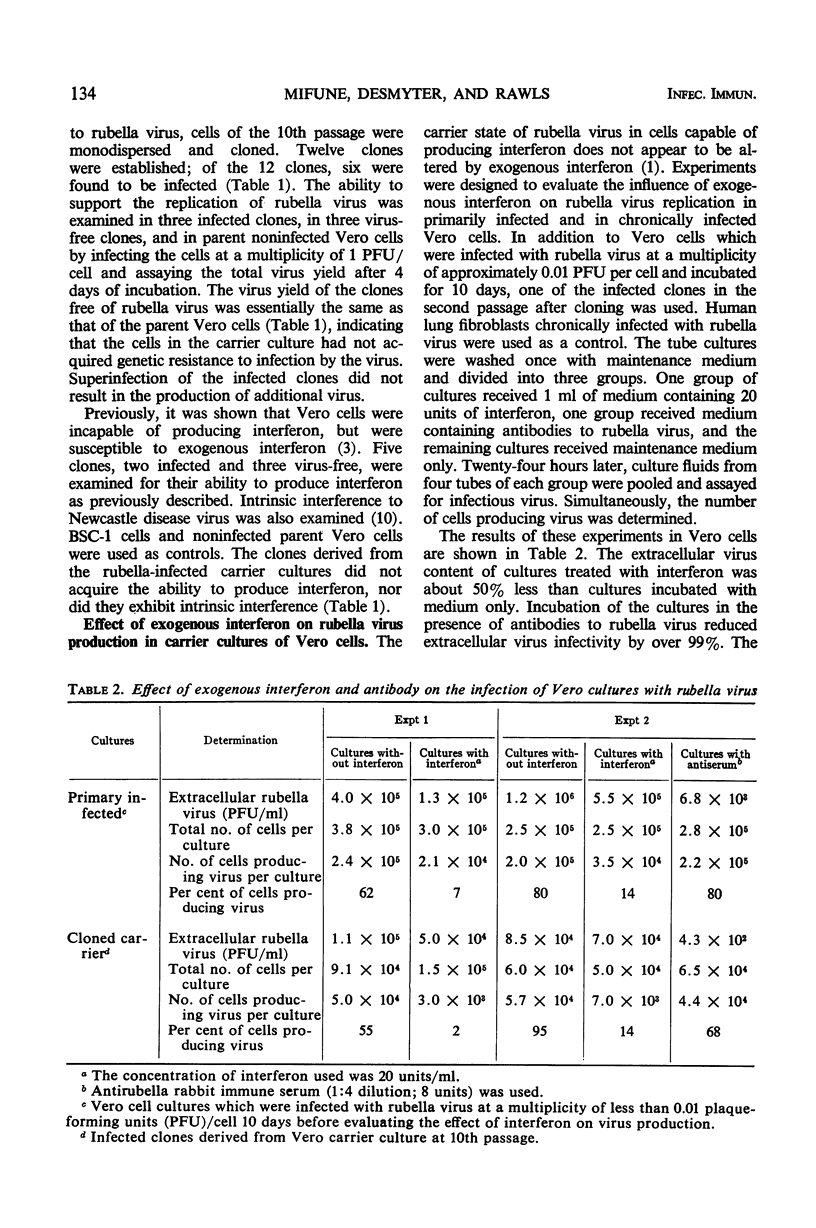
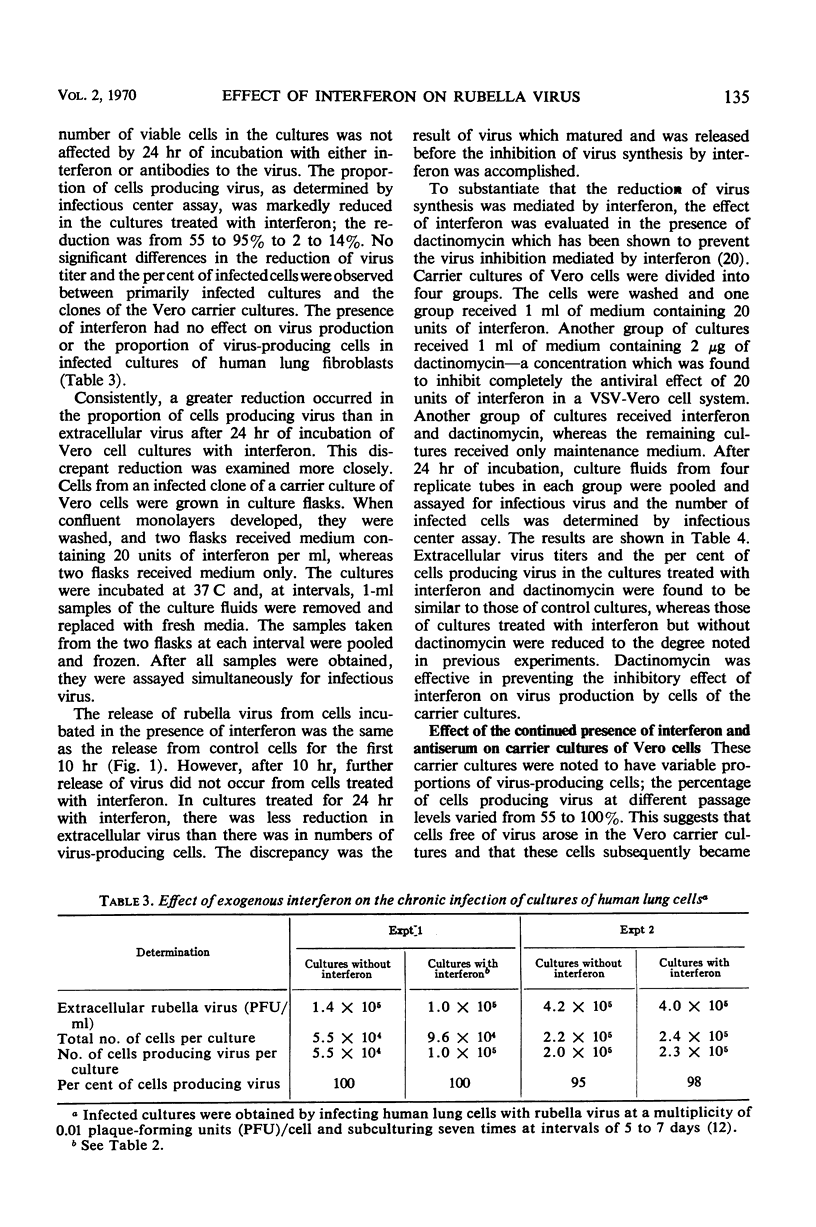
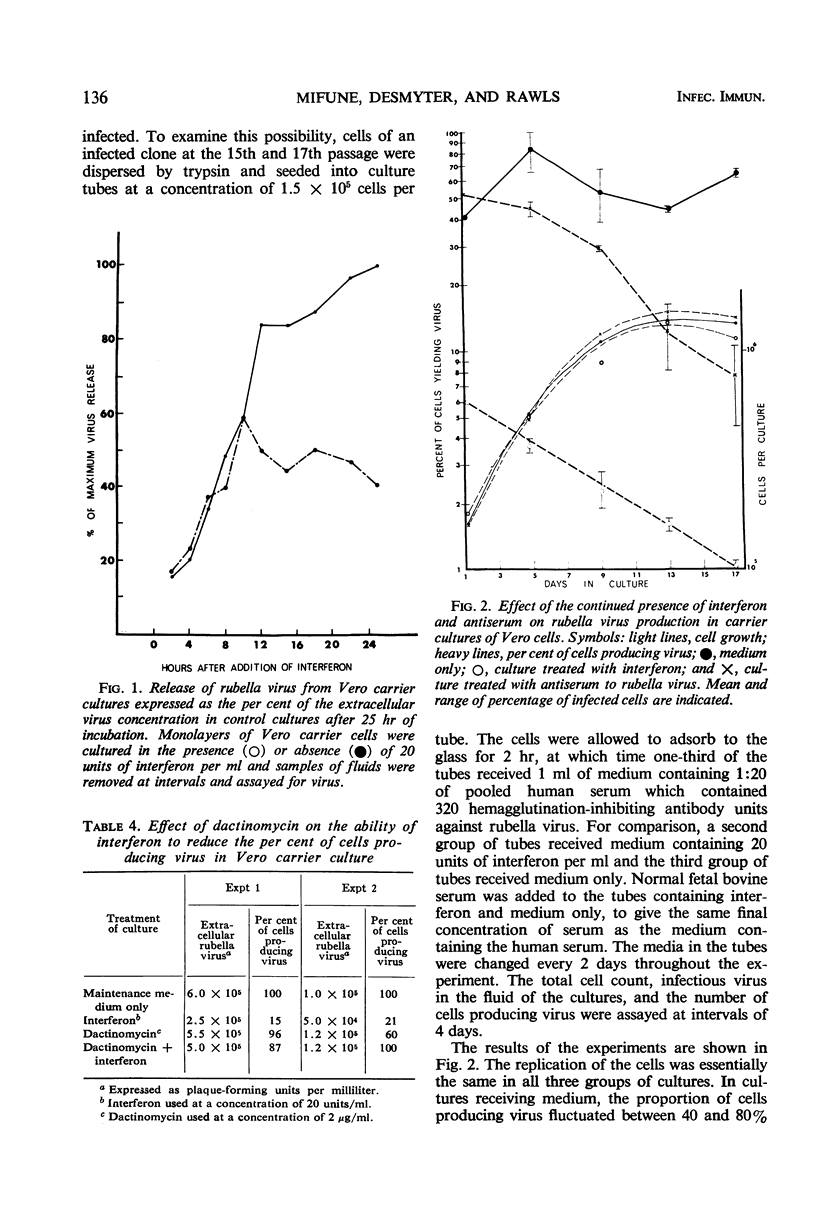
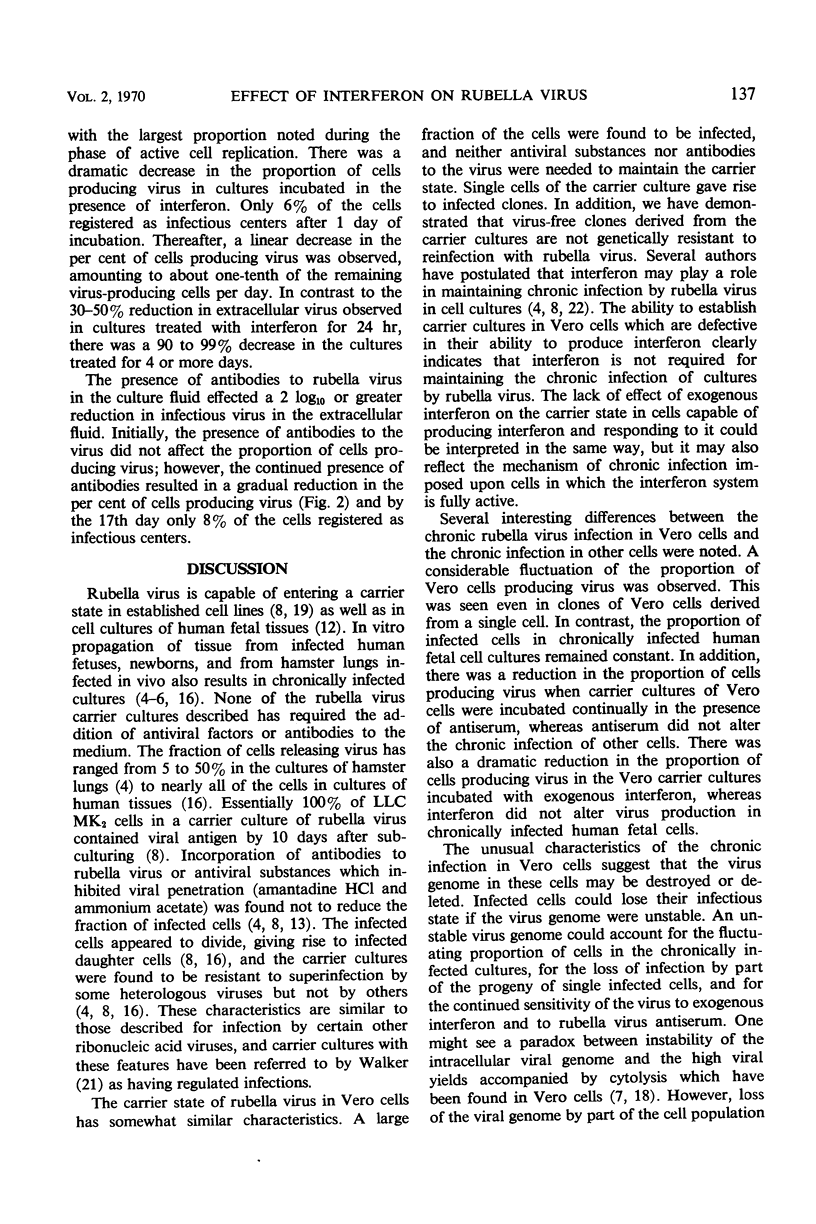
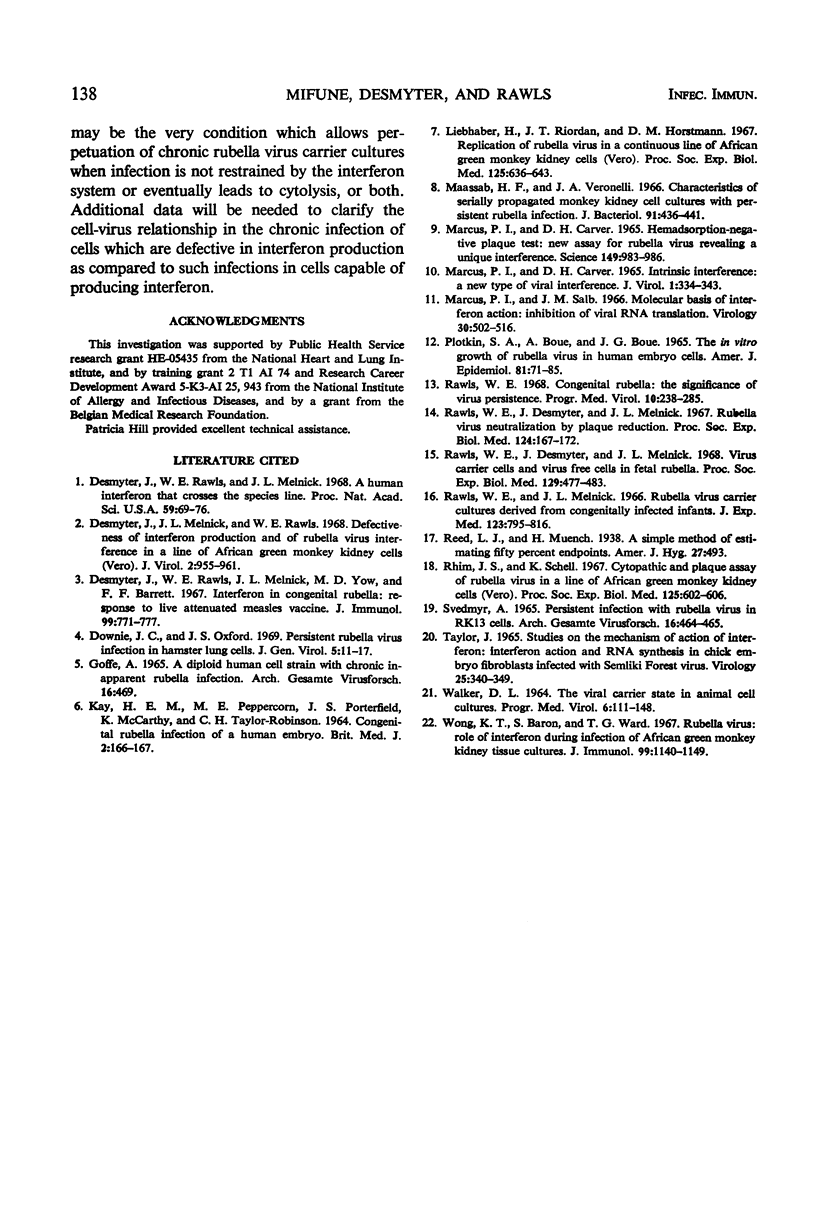
Selected References
These references are in PubMed. This may not be the complete list of references from this article.
- Desmyter J., Melnick J. L., Rawls W. E. Defectiveness of interferon production and of rubella virus interference in a line of African green monkey kidney cells (Vero). J Virol. 1968 Oct;2(10):955–961. doi: 10.1128/jvi.2.10.955-961.1968. [DOI] [PMC free article] [PubMed] [Google Scholar]
- Desmyter J., Rawls W. E., Melnick J. L. A human interferon that crosses the species line. Proc Natl Acad Sci U S A. 1968 Jan;59(1):69–76. doi: 10.1073/pnas.59.1.69. [DOI] [PMC free article] [PubMed] [Google Scholar]
- Desmyter J., Rawls W. E., Melnick J. L., Yow M. D., Barrett F. F. Interferon in congenital rubella: response to live attenuated measles vaccine. J Immunol. 1967 Oct;99(4):771–777. [PubMed] [Google Scholar]
- Downie J. C., Oxford J. S. Persistent rubella virus infection in hamster lung cells. J Gen Virol. 1969 Jul;5(1):11–17. doi: 10.1099/0022-1317-5-1-11. [DOI] [PubMed] [Google Scholar]
- GOFFE A. A DIPLOID HUMAN CELL STRAIN WITH CHRONIC INAPPARENT RUBELLA INFECTION. Arch Gesamte Virusforsch. 1965;16:469–469. doi: 10.1007/BF01253857. [DOI] [PubMed] [Google Scholar]
- KAY H. E., PEPPERCORN M. E., PORTEFIELD J. S., MCCARTHY K., TAYLOR-ROBINSON C. H. CONGENITAL RUBELLA INFECTION OF A HUMAN EMBRYO. Br Med J. 1964 Jul 18;2(5402):166–167. doi: 10.1136/bmj.2.5402.166. [DOI] [PMC free article] [PubMed] [Google Scholar]
- Liebhaber H., Riordan J. T., Horstmann D. M. Replication of rubella virus in a continuous line of African green monkey kidney cells (Vero). Proc Soc Exp Biol Med. 1967 Jun;125(2):636–643. doi: 10.3181/00379727-125-32167. [DOI] [PubMed] [Google Scholar]
- Maassab H. F., Veronelli J. A. Characteristics of serially propagated monkey kidney cell cultures with persistent rubella infection. J Bacteriol. 1966 Jan;91(1):436–441. doi: 10.1128/jb.91.1.436-441.1966. [DOI] [PMC free article] [PubMed] [Google Scholar]
- Marcus P. I., Carver D. H. Hemadsorption-negative plaque test: new assay for rubella virus revealing a unique interference. Science. 1965 Aug 27;149(3687):983–986. doi: 10.1126/science.149.3687.983. [DOI] [PubMed] [Google Scholar]
- Marcus P. I., Carver D. H. Intrinsic interference: a new type of viral interference. J Virol. 1967 Apr;1(2):334–343. doi: 10.1128/jvi.1.2.334-343.1967. [DOI] [PMC free article] [PubMed] [Google Scholar]
- Marcus P. I., Salb J. M. Molecular basis of interferon action: inhibition of viral RNA translation. Virology. 1966 Nov;30(3):502–516. doi: 10.1016/0042-6822(66)90126-7. [DOI] [PubMed] [Google Scholar]
- PLOTKIN S. A., BOUE A., BOUE J. G. THE IN VITRO GROWTH OF RUBELLA VIRUS IN HUMAN EMBRYO CELLS. Am J Epidemiol. 1965 Jan;81:71–85. doi: 10.1093/oxfordjournals.aje.a120499. [DOI] [PubMed] [Google Scholar]
- Rawls W. E. Congenital rubella: the significance of virus persistence. Prog Med Virol. 1968;10:238–285. [PubMed] [Google Scholar]
- Rawls W. E., Desmyter J., Melnick J. L. Rubella virus neutralization by plaque reduction. Proc Soc Exp Biol Med. 1967 Jan;124(1):167–172. doi: 10.3181/00379727-124-31692. [DOI] [PubMed] [Google Scholar]
- Rawls W. E., Desmyter J., Melnick J. L. Virus carrier cells and virus-free cells in fetal rubella. Proc Soc Exp Biol Med. 1968 Nov;129(2):477–483. doi: 10.3181/00379727-129-33348. [DOI] [PubMed] [Google Scholar]
- Rawls W. E., Melnick J. L. Rubella virus carrier cultures derived from congenitally infected infants. J Exp Med. 1966 May 1;123(5):795–816. doi: 10.1084/jem.123.5.795. [DOI] [PMC free article] [PubMed] [Google Scholar]
- Rhim J. S., Schell K. Cytopathic and plaque assay of rubella virus in a line of African green monkey kiency cells (Vero). Proc Soc Exp Biol Med. 1967 Jun;125(2):602–606. doi: 10.3181/00379727-125-32157. [DOI] [PubMed] [Google Scholar]
- SVEDMYR A. PERSISTENT INFECTION WITH RUBELLA VIRUS IN RK 13 CELLS. Arch Gesamte Virusforsch. 1965;16:464–465. doi: 10.1007/BF01253855. [DOI] [PubMed] [Google Scholar]
- TAYLOR J. STUDIES ON THE MECHANISM OF ACTION OF INTERFERON. I. INTERFERON ACTION AND RNA SYNTHESIS IN CHICK EMBRYO FIBROBLASTS INFECTED WITH SEMLIKI FOREST VIRUS. Virology. 1965 Mar;25:340–349. doi: 10.1016/0042-6822(65)90053-x. [DOI] [PubMed] [Google Scholar]
- WALKER D. L. THE VIRAL CARRIER STATE IN ANIMAL CELL CULTURES. Prog Med Virol. 1964;6:111–148. [PubMed] [Google Scholar]
- Wong K. T., Baron S., Ward T. G. Rubella virus: role of interferon during infection of African green monkey kidney tissue cultures. J Immunol. 1967 Dec;99(6):1140–1149. [PubMed] [Google Scholar]


